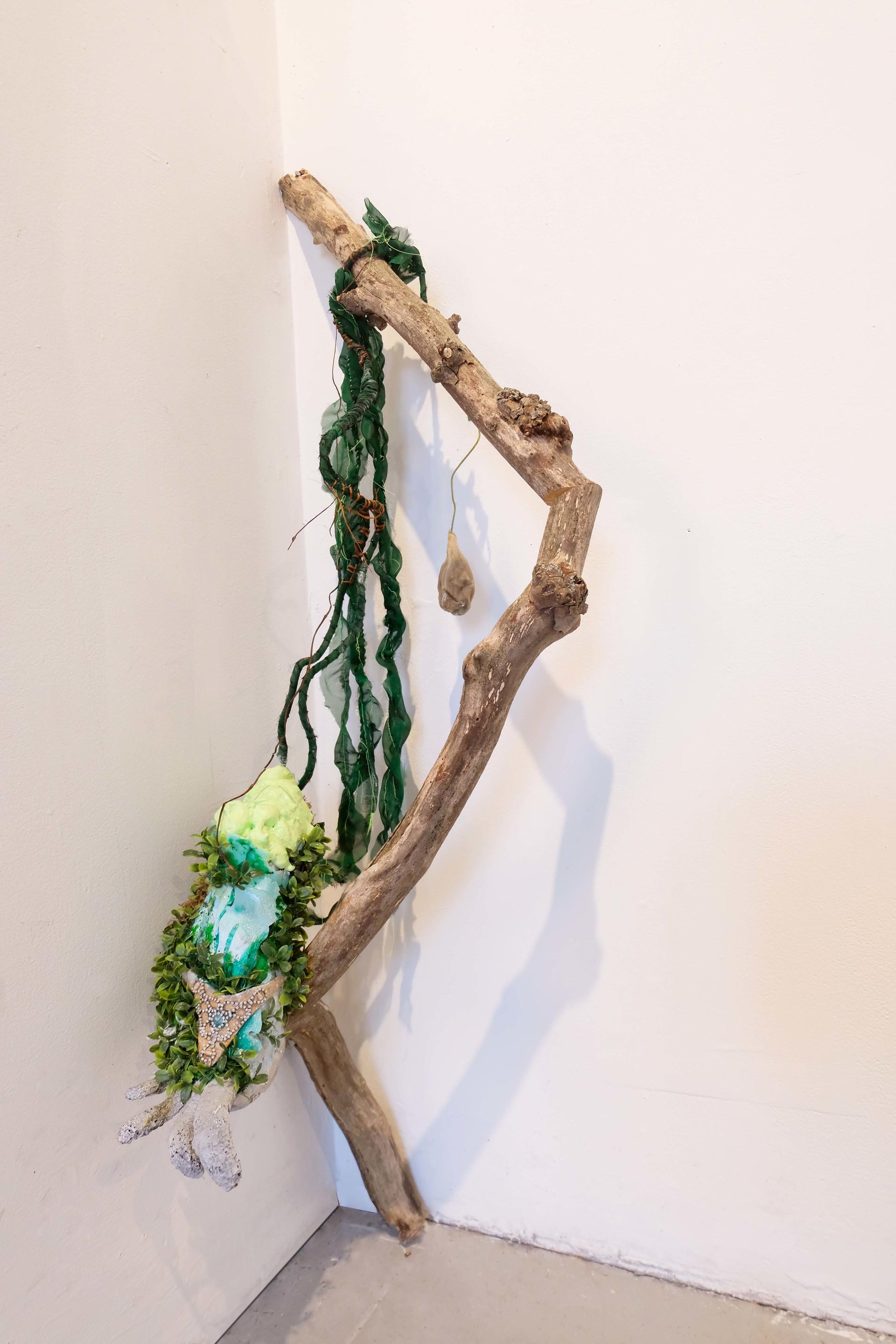Swelling
Assuming my perspective of a woman, tending to, caring for, mending, I recalled Swelling an older piece I made in 2022 which emerged from actions of repair, using discarded fabrics from my mother and my collection.
A Body Finding Freedom Within Itself
When a dislocation of any type occurs, whether geographical, emotional, or spiritual, the disorder pushes the self to retreat to safety. For me, that safety is in my body. It is in this place of retreat where I locate my original home.
In this space of translocation, I forage for materials from my surroundings and places that I
belong to. Moving between Dubai, Damascus, Beirut, and Providence, I shape a reality dependent on what is available. I then transform these materials, searching for the forms and relationships that emerge while meditating on home and the body as a moving vessel and container for attachments.
My work involves various modes of reflection through making. Drawings help with understanding experiences, while material and form are the physical structures that embody personal narratives, and other realities of non-belonging.
How do we locate ourselves? How is memory of the homeland imprinted on the body?
Concerns with human consumption persist for me; I am conscious of what and how I consume, purchase, and discard. In my art practice, a lot of the materials and surfaces I use are repurposed. I save and collect containers for future reuse. I’ve always wanted to stuff plastic waste into canvas backings or inside sculptures to rid the natural environment of our trash. For example, the folds of Hustera are created using layers of 25 plastic bags.
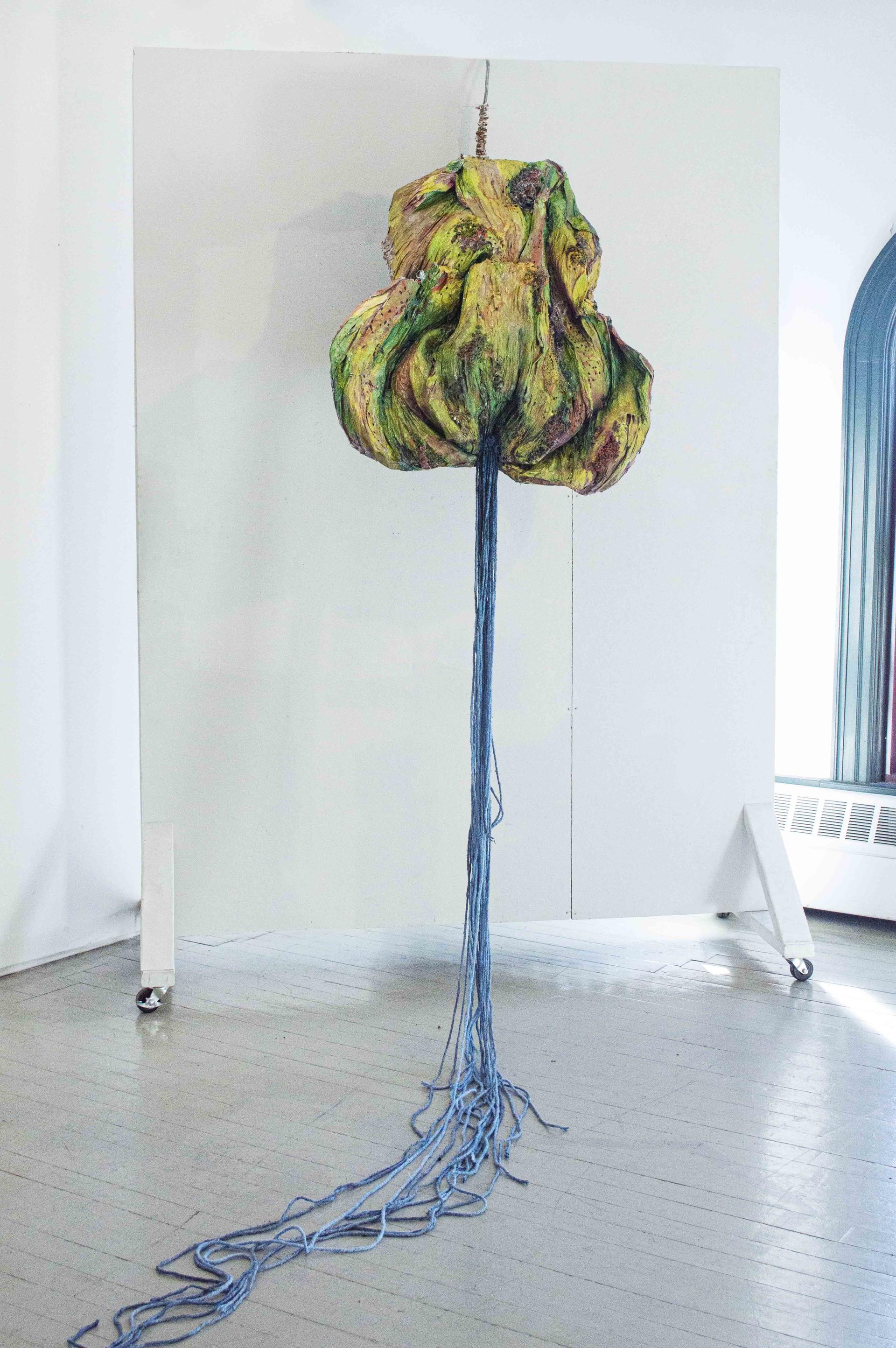
Assuming my perspective of a woman, tending to, caring for, mending, I recalled Swelling an older piece I made in 2022 which emerged from actions of repair, using discarded fabrics from my mother and my collection.
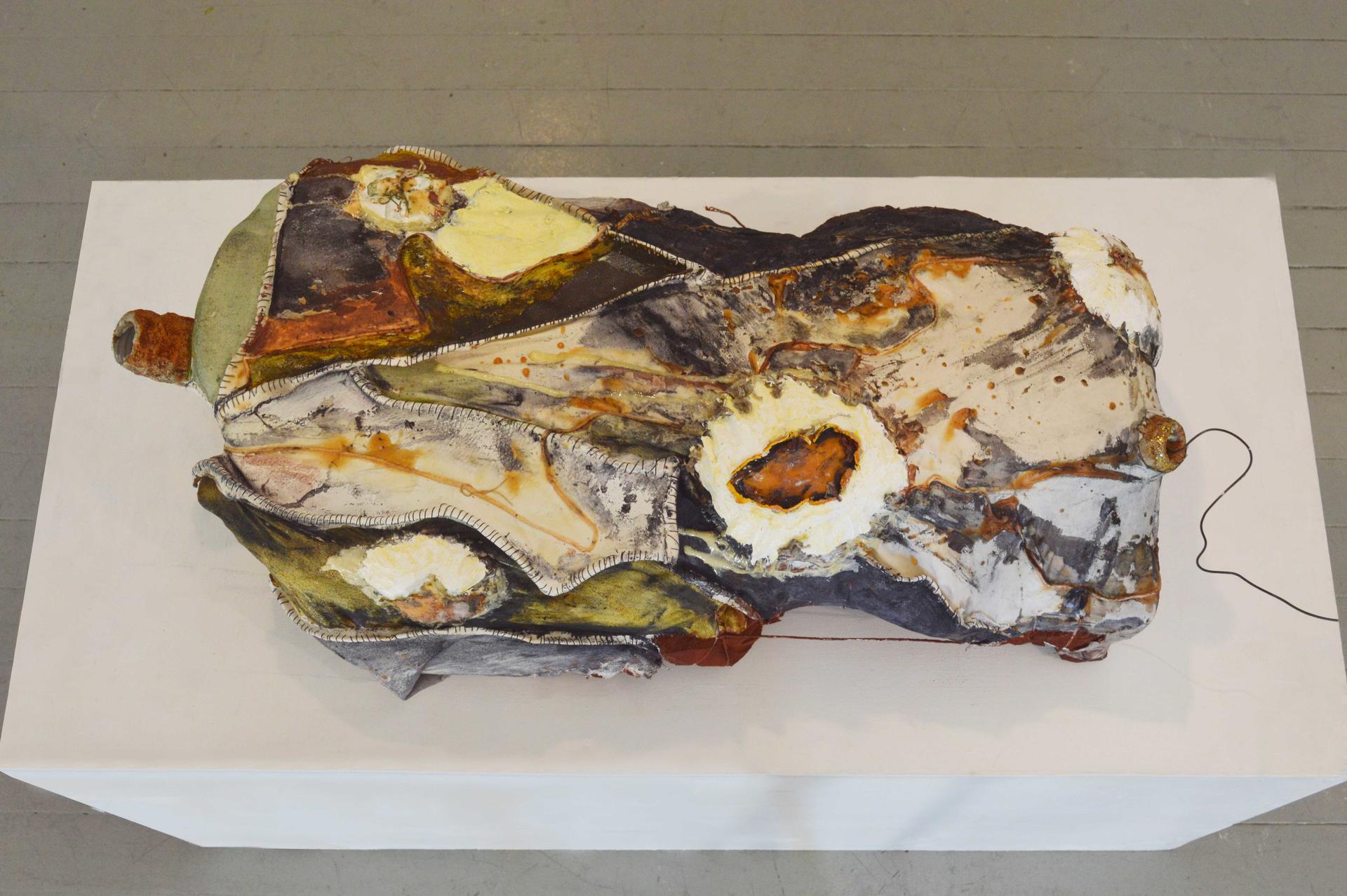
A World Not Ours is a documentary by the Palestinian-Danish film director Mahdi Fleifel about the Ain El Helweh refugee camp in Lebanon. The film stayed with me for days. These films are so difficult to watch, a reminder of the realities of humans, of Arabs, Palestinians and the “conflict” we grew up hearing about on the news and from friends. An occupation that has lasted 75 years.
The feeling of being stuck. You can see from the faces of the people in the camp, from their eyes, that there is no hope and there is no getting away from. There is no amount of self-help or self-care or striving that can get you out. A monotonous existence with no rights and no fulfilling aspiration. There must be a point in a person’s life when everything fails and the soul is broken down. It makes no effort to try anymore.
Towards the end of the film, the main character, Abu Eyad, attempts the illegal trip to Greece through Syria and Turkey. The dangerous and expensive journey finally gets him to the Serbian border, where he is caught and sent back to Greece. He spends a whole year living on the streets with other refugees, with no papers, no resolution, only to be told he would be sent back to the camp.
That final shot, catching the look on his face, the dread. Fleifel knew there was nothing more to be said.
It got me thinking about the opposite of movement and migration. The state of non-movement, halting, grounding, imprisonment.
We are containers of our own thoughts, feelings, and experiences, and just like containers, we can be full or filled, empty or emptied. What is a container if it can’t function as a container to its full potential? If it leaks, is stuck to the ground, worn out?
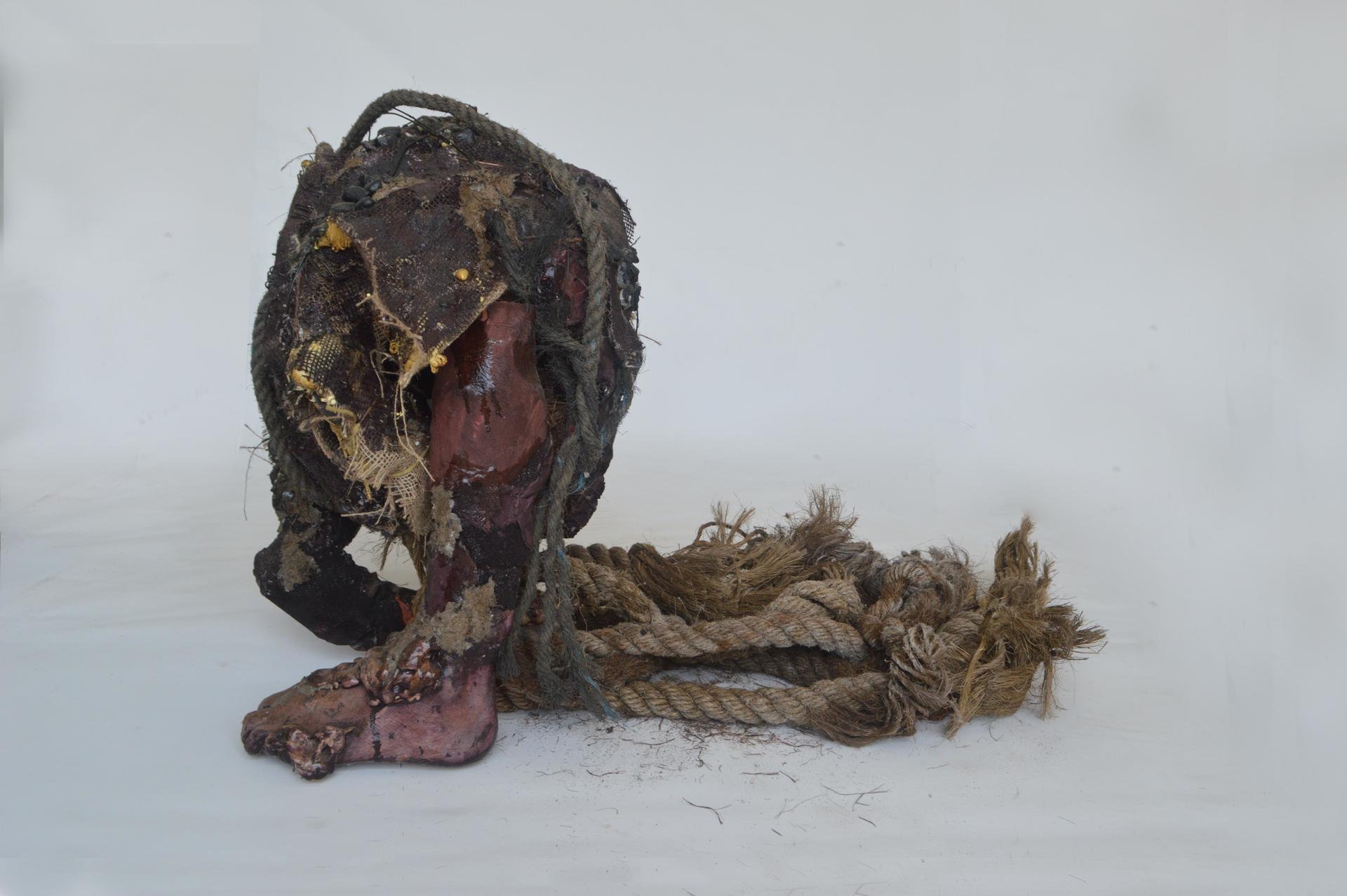
Najwa / Talking to God (2023) is a very special piece for me. I put it together thinking about my grandmother, Najwa. Her name means “talking to God.” Thinking about sounds that locate me, I compiled the voice notes sent over Whatsapp from family members as expressions of care and affection. I chose the voice of my maternal grandmother whose own story of movement reflects the reality of our time. My grandfather, her husband, left Syria in the late 70’s to pursue his education in the UK and remained there. After many years, my grandmother followed, and they would both live out their retirement in London. In the last couple of years, her health began to deteriorate, and the dilemma of distance, of being so far away from her family, kids, and her home, created a sense of discomfort and longing. The United Kingdom offered comfort in assistance, yet it was far from her sense of belonging and family care. Her voice messages are bittersweet. The foreign land offers hope, while the homeland is where love is located. The piece is meant to be contemplative. You can lie down underneath it and listen to her speak to you kindly, affectionately, locating yourself in love and home.

Zeitoun is Arabic for “olive,” and this piece is based on one of the conversations I had with an asylum seeker in Providence who told me she missed the olive trees that were abundant in her village in Syria. Here I’m thinking about the relationship between migrant bodies and resisting bodies, and their environment. Found in the Mediterranean, the olive tree is one of the most significant plants for the culture of people from the Levant—its oil is precious for people from the Middle East. It is referenced in religion and has also become one of many symbols of resistance. For instance, in occupied Palestine, Israeli settlers continuously uproot and destroy thousands of olive trees on Palestinian lands, which makes their replanting a form of upholding, restating, or reclaiming of the land. This piece follows the notion of how a fruit can have significant sentimental and political associations in our existence and memory.
The olive seed is covered with suede found in Providence, along with the rope. By placing it barely hanging from the rope suspended in space, I think about transience and instability, reflecting on migratory bodies that are also in a state of transition, unstable, carrying with them memories about the homeland and ideas of belonging. I filled the seed with olive oil that slowly drips out onto the floor, playing with ideas of time, movement, scarcity, loss, and preciousness.
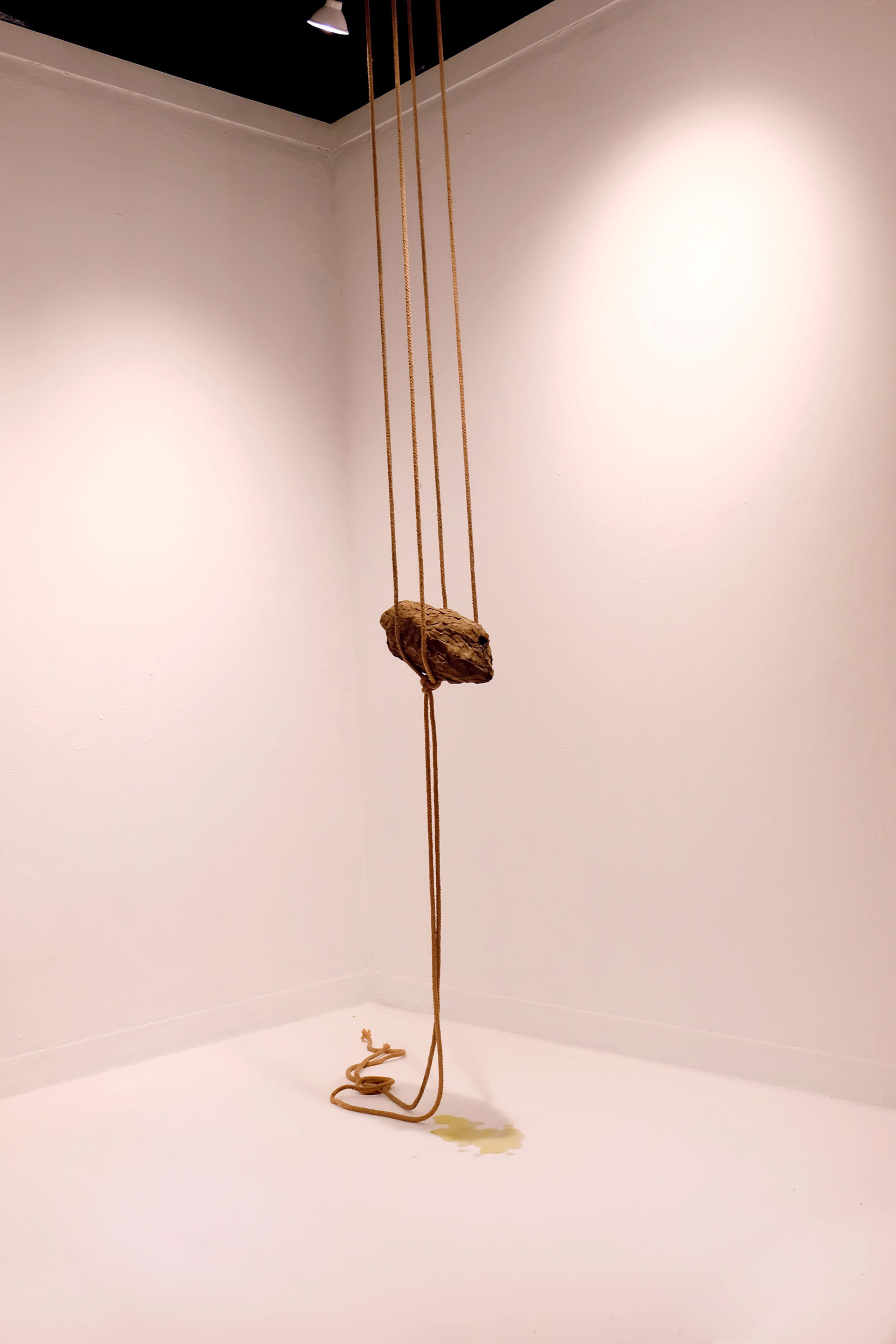
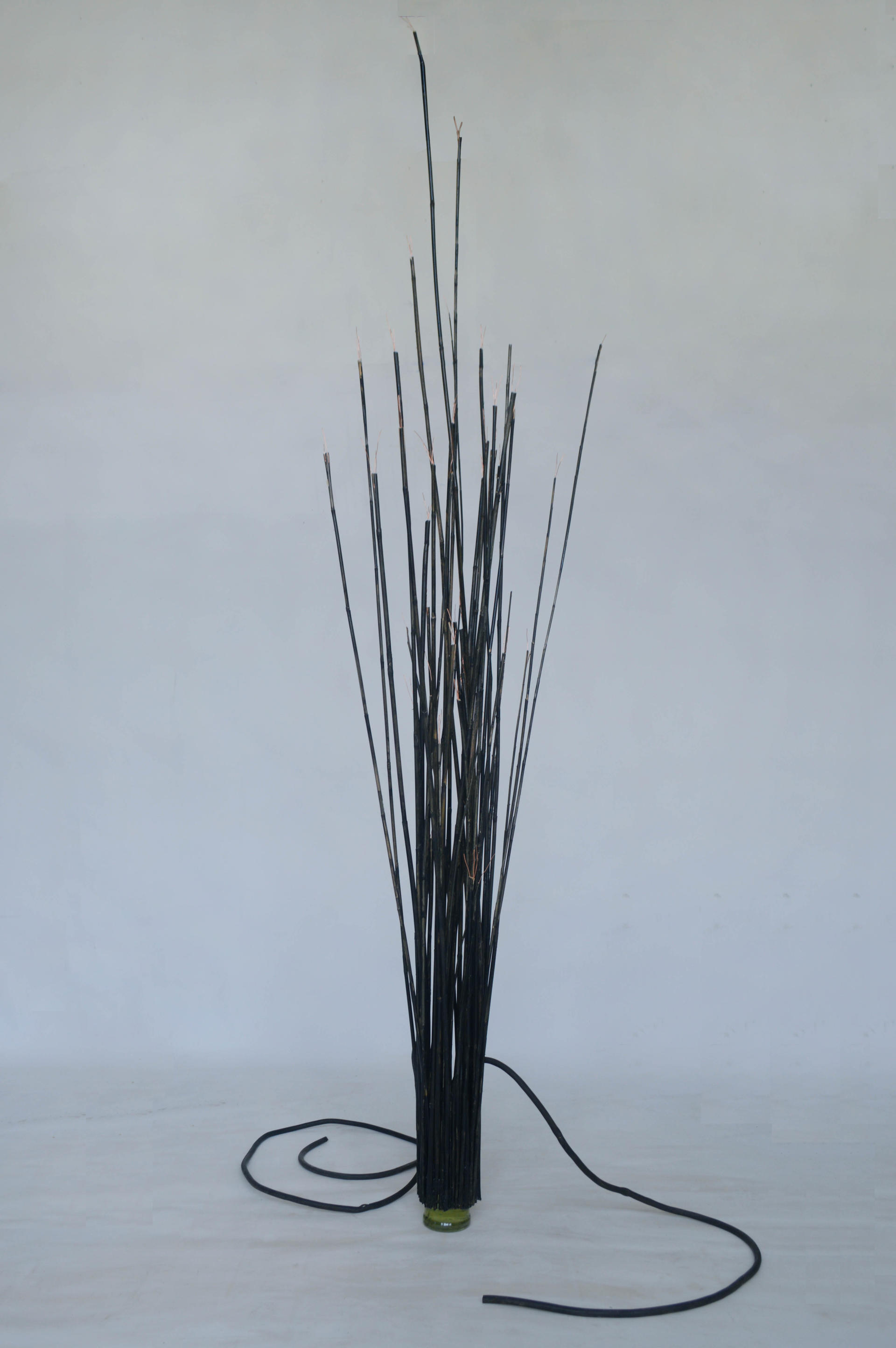
Queen Zanobia, the third century Palmyrian queen is rooted in Syrian mythology and storytelling—a pride of our history too. During the recent civil war, ISIS occupied Palmyra while looting and destroying artifacts, and murdering people. The violence that was performed there still rests in the area, and contributed to the displacement of people, their land, and their history.
